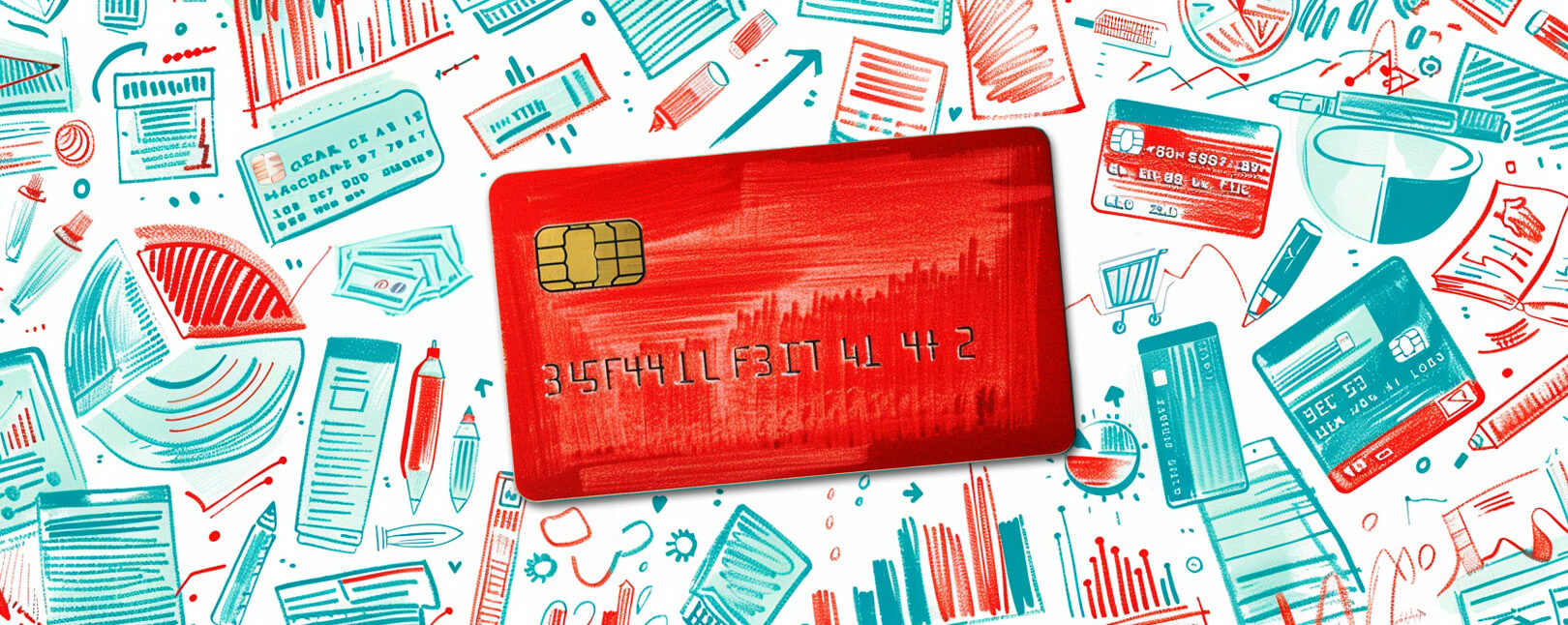Bust-Out Fraud: A Long-Term Scheme with a Big Price Tag
Have you heard someone bust out laughing? It’s usually because they’ve heard or experienced something unexpected. The same basic thing happens with bust-out fraud, with one main difference: there’s nothing to laugh about.
This type of criminal endeavor is a serious threat. It costs credit card companies an estimated $1.5 billion annually. Unsurprisingly, those costs ultimately get passed on to merchants and consumers.
In this post, we explore what bust-out fraud is and how the problem is getting worse. We’ll also explain why merchants seldom identify the scam until it’s too late.
Recommended reading
- Address Fraud: How Criminals Swap Addresses to Abuse Victims
- How do Banks Conduct Credit Card Fraud Investigations?
- What is Wardrobing? How Can Retailers Stop Refund Abuse?
- Key Credit Card Fraud Statistics to Know for 2024
- Scammers See Opportunity as March Madness Begins
- Man-in-the-Middle Attacks: 10 Tips to Prevent These Scams
What is Bust-out Fraud?
- Bust-Out Fraud
Bust-out fraud is a practice by which a fraudster acquires a credit card account using false information, then leverages that account to develop an extended line of credit. When the available credit is high enough, the fraudster maxes out the cards and walks away without paying, effectively “busting out” of the scam.
[noun]/bəst • out • frôd/Unlike other transaction fraud tactics, bust-out credit card fraud is a game of patience. Like the proverbial golden goose, trying to get too much too fast will usually backfire. In most cases, the longer the fraudster nurtures a fake account, the higher the payoff will be.
While the details will vary, these ploys follow the same basic pattern. First, a fraudster gains access to a consumer’s Social Security number. That information is used to create a fake persona and open a credit card account.

Rather than immediately maxing out that card, however, the bogus customer works to establish a strong and reputable credit profile by mimicking the behavior of a real cardholder. The fraudster makes purchases and pays the bills on time, sometimes for months or even years.
The idea is to gradually build a strong payment history, which can lead to higher credit limits and make it easier to open other accounts. The consumer whose SSN is being used could end up with tens of thousands of dollars in available credit that they don’t even know about. It all depends on how long the fraudster maintains the scheme.
At some point, though, the fraudster will “bust out.” They max out the cards, charge all the credit accounts to their limit and withdraw as much cash as possible. Then, they vanish. This chart illustrates the general process of the credit bust-out scheme.
While it can yield a substantial payoff, a single bust-out could take months or years to come to fruition. That’s why it’s increasingly rare for such fraud to be the work of one individual. These days, large criminal rings employ multiple people to set as many plans in motion as possible.
How Does Bust-Out Fraud Happen?
To start the scam, the fraudster needs one or more active Social Security numbers. These can be obtained first-hand through phishing. They can also be purchased in bulk off the dark web.
Certain bust-out schemes target consumers who already have excellent credit scores. The criminal could pose as the legitimate cardholder, or create a “Frankenstein” synthetic identity. In either case, the account is fleshed out by adding fake contact information. More sophisticated scams include additional props, like phony social media accounts.
The fraudster may also look for individuals who have no credit rating at all. Children are popular targets, as are deceased individuals. It’s obviously more difficult to open a new account without a credit history, but that’s almost inconsequential. Even if the application is denied, the very act of asking for credit establishes a new credit history attached to that Social Security number.
While a blank credit record will usually not satisfy Visa or Mastercard, it may be enough for the fraudster to open a department store or gas station charge account. The brand, type, and spending limit of the card aren’t important. Simply having an open account is enough to launch the scam.
Once the account is established, the fraudster will go about nurturing and legitimizing it by making purchases and paying off the balance in full each month. Doing so helps earn them a reputation as a dependable, responsible borrower. Ironically, purchases and timely payments on each new card paint the fraudster as a lower credit risk.
At first glance, all these purchases may appear to be a financial investment in the scam. That’s not necessarily the case, though. The fraudster may be engaging in some form of “cash-cycling,” such as charging things on Card A, then taking advantage of interest-free transfer offers on Card B to pay off the original debt.
The money stays in the criminal’s “network” while simultaneously helping them show activity on multiple cards. The fraudster may even go so far as to apply for a car loan or purchase a high ticket item on a Buy Now, Pay Later plan. Of course, the buyer has no intention of repaying the lender.
The Financial Impact of Bust-Out Fraud
When their bogus account holder’s credit limit goes high enough (typically in the $10,000 to $20,000 range), the bust out happens. The crook maxes out all the cards and available cash advances, then simply vanishes. The anonymity of the internet and the absence of any official connection to the original Social Security number, makes the fraudster virtually impossible to trace.
Worse, the crime probably won’t immediately be recognized as fraud. At first, each of the different stakeholders will only see the loss to their own business and write it off as bad debt. The true scope of the crime isn’t revealed until all the various pieces are traced back to the SSN’s true owner. Unfortunately, that could take months.
An individual whose SSN is tied to a bust-out fraud scam has a lot to lose. That said, a bust-out is also a complex and costly problem for banks, card networks, and merchants. Technology is compounding the problem, as bots and other types of automation simplify the creation of fake IDs, streamlining the process of opening hundreds — even thousands — of bad credit lines.
One organized credit card fraud ring cost financial institutions over $200 million in the period between 2003 and 2016. This scam involved 7,000 identities and more than 25,000 unique credit cards. This is just one instance; some reports suggest losses could be as high as $6 billion annually.
Issuers may absorb some of these costs, but the sad truth is that most of this burden will trickle down to merchants. Adding insult to injury, cardholders who fall victim to the scam will often file chargebacks to recover their loss. Substantial chargeback fees would make the merchant’s consequences even greater.
5 Common Signs of a Bust-Out Fraud Scam
The linchpin of a successful bust-out scam is making a payment history look like that of a real consumer. Fraudsters know that, so they specifically focus on appearing “normal.” Some will even go so far as to deliberately make an occasional late payment, keeping their record good, but not unrealistically perfect.
A believable credit report increases the odds of a good payout. Unfortunately, it also makes identifying a fraudster from credit ratings or financial history almost impossible.
Almost… but not quite.
The good news is that there are some red flags that can warn institutions about an in-progress or impending bust-out. Common patterns linked to this scam include:
While these may seem rather obvious, they are mostly the responsibility of issuers, not merchants. A merchant may notice a change in purchasing patterns. For the most part, though, they have no hand in issuing cards or raising credit limits.
Even if the merchant has the resources to carefully monitor accounts for unusual activity, limited information can make it hard to tell fraud from genuine purchases. For example, imagine that a person regularly charges (and pays off) $50-100 monthly, then suddenly purchases a $3,500 hi-def television. A single splurge may not be enough to raise eyebrows, but alarms might go off if the merchant knew that the same customer had made multiple uncharacteristically large purchases simultaneously.
Unfortunately, that kind of insight is rarely available. With bust-out fraud, effective prevention is worth more than even the best detection.
Can Bust-Out Fraud be Prevented?
Is bust-out fraud actually preventable? Probably not entirely, but banks and other financial institutions can employ technology that helps recognize suspicious or synthetic identity data. This has the potential to stop schemes before they progress too far.
Fraudsters often reuse both real and fake data when creating phony profiles. Third-party software packages can track this information using advanced detection algorithms. Most solutions can also check connections between email, phone, and social media data associated with the credit applicant.
If a fraudster is asked for additional information or suspects they have been discovered, they’re likely to bail. At that point, the profit-to-risk ratio is usually too great. This is often sufficient to make criminals abandon the scam.
But again, the techniques discussed here are far removed from the merchant. In other words: merchants can’t do much to detect or prevent bust-outs. This is true even though they are the ones who will eventually have to deal with many of the consequences.
Bust-out Fraud: One More Thing to Worry About
Banks, credit card networks, and even the government may find ways to curb bust-out fraud schemes, but that won’t help merchants in the short term. And that’s just one type of fraud; there are many others.
Fraud prevention diverts time and resources from more profitable pursuits, like growing the business. Many retailers have discovered that they can save significant amounts of time, stress, and revenue by turning fraud prevention efforts over to third-party solution providers.
At Chargebacks911®, we can help you do much more to prevent a wide range of fraud scenarios. We’re experts at recovering revenue lost to all types of fraudulent activity. To learn more, contact us today.
FAQs
What is bust-out fraud?
With bust-out fraud, criminals use stolen or counterfeited data to obtain a credit card, then use those credentials to build a good credit score and open more accounts. At some point, they max out the cards and disappear.
Who pays for bust-out fraud?
Since credit cards come with limited or no liability for theft, issuers will need to reimburse cardholders. However, they typically try to recoup those costs from merchants. If the cardholder files a chargeback over the stolen funds, everything will fall on the merchant.
How do fraudsters obtain personal data?
Most bust-out scams are built around stolen Social Security numbers, typically acquired through phishing or purchased in bulk off the dark web.
Can bust-out fraud be detected or prevented?
With diligence, some cases can be stopped by banks or card processors. The fraud is nearly impossible to recognize on the merchant level, but monitoring purchases for unusual activity may help detect fraudulent activity.













